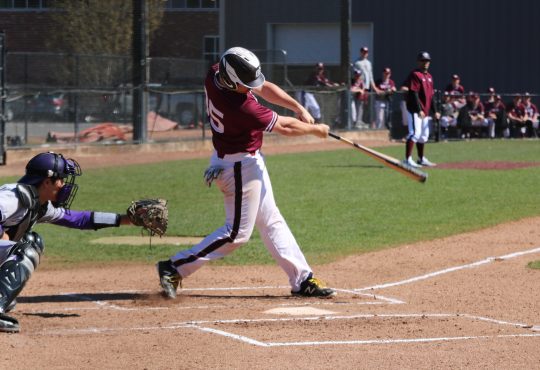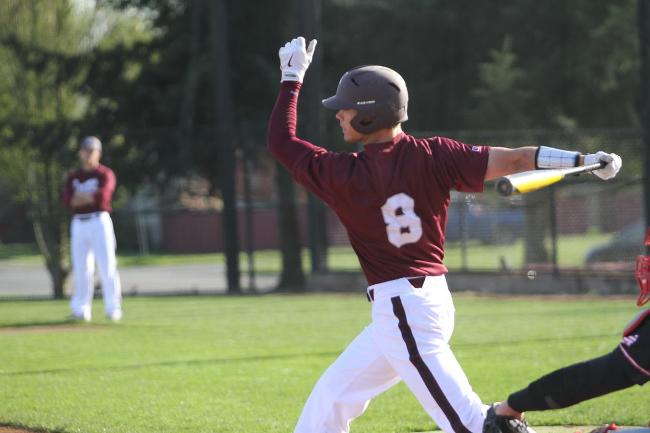Loggers recover from Tommy John surgery: Three Puget Sound athletes suffer baseball-specific injury
What is the surgery to have as a competitive baseball pitcher? The Tommy John surgery.
A surgery so specific to a playing position has never been more common in baseball than it is today. The injury that occurs in many baseball pitchers is a tear in the elbow, which is caused by a rupture of the ulnar collateral ligament (UCL).
Ever since the first UCL surgery in 1974, when Dr. Frank Jobe operated on Dodgers’ pitcher Tommy John, the most effective and efficient method to fix this injury has been to perform the surgery as well as receive post-surgery recovery training, according to ESPN.
USA Today reports that many pitchers take interest in the benefits of this surgery and its outcomes because of the 85 percent success rate, as well as the chance for their pitching skills to remain the same if not have the ability to improve.
At the University of Puget Sound, the varsity baseball team has many skilled players who contribute to the team.
In particular, three players have undergone the Tommy John surgery and are each currently at different stages of recovery. Their experience is important not only to their individual skill level, but also to the team as a whole.
Freshman Alex Wojtysiak (Fountain Hills, Ariz.), who received the Tommy John surgery ten and a half months ago, is almost at a full recovery.
After continuous strain on his elbow from nonstop pitching, his UCL began to wear down, causing him to get an MRI and eventually to decide to have the surgery performed.
“It was a pretty easy decision. It was either get [the Tommy John surgery] or stop playing,” Wojtysiak said.
While post-surgery creates physical pain and stress, there is also a mental aspect that is associated with the operation.
“It was kind of hard, I thought it was going to be really bad because I’ve never gone more than two weeks without playing ball…but you are constantly rehabbing so it gives you something to think about,” Wojtysiak said.
Halfway through the recovery process—at the six-month mark—sophomore Anthony Brady (Idaho Falls, Idaho) is slowly working his way back into his old baseball routine. On Feb. 16, 2012, during a league game, Brady’s UCL tore at one moment during a pitch.
The severity of a UCL tear causes many players to rely on the Tommy John surgery to regain their strength and skills. Brady’s passion for baseball influenced his decision on the Tommy John surgery.
“There was nothing that I could do mentally, just the idea of not being able to pitch again was so much shock already that I knew I had to go through with something and brace myself for whatever came in the next twelve months with rehab,” Brady said.
At a much earlier stage of the recovery process, freshman Layne Croney, who tore his UCL on April 9, went through a different process than the other two players.
Before deciding on the surgery, Croney went through a couple of months of physical therapy along with numerous MRIs before deciding on the Tommy John surgery.
“For me, it was get the surgery and be able to play again or decide not to have the surgery and end my career—and that wasn’t really an option for me at that point,” Croney said.
An overall successful experience, the surgery went smoothly because the tendon was removed from his wrist instead of another area, unlike Brady and Wojtysiak where a tendon was removed from their legs.
Only two months after the surgery, Croney still has to wear a hinged brace, but is slowly working on strength training and muscle gains.
For all three players, the common theme of wanting to continue their careers as baseball players reflects the passion they bring to the sport despite their life-changing injuries.
A major benefit of the surgery is an increase in strength, muscle gain and being able to rebuild pitching techniques.
“I’m stronger now than I ever was…and it really refines your focus and your passion,” Brady said.
While they are at different stages of the recovery, Wojtysiak confirms the benefits.
“Throughout the whole rehab you work on different muscle groups that you wouldn’t have worked on unless you had [the surgery],” Wojtysiak said.
Obvious drawbacks to the surgery include the lack of playing time as well as the lengthy recovery time.
Although the three players have had special training to regain their pitching strength, they agree that it has been a long process in order to be able to play baseball again.
While Brady, Croney and Wojtysiak are all in differing stages of the recovery process from the famous pitcher surgery, they are all strengthening and improving their skills in order to become better pitchers for the Logger baseball team.
Dedication like theirs to their sport of choice is what makes Logger athletes stand out.




